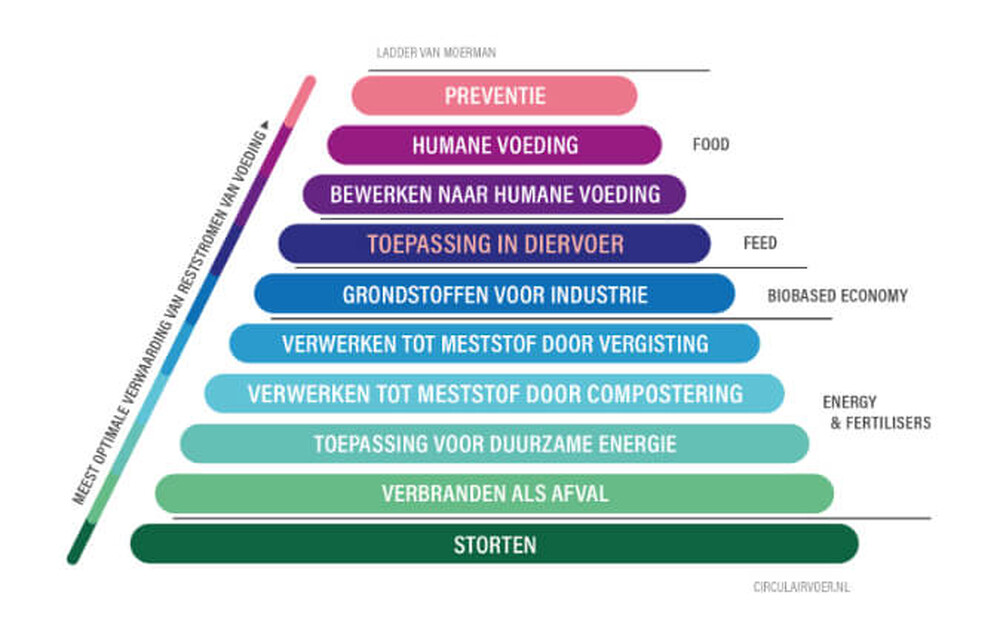Circular feed is animal feed that is fully composed of residual and return flows of former foodstuffs. Circular raw materials do not have direct or indirect food competition with humans and they are not grown with the intention of serving as animal feed. Circular raw materials generally have a smaller CO₂ footprint than regular raw materials with comparable nutritional value.
In the production of food, there are always unintended and unavoidable losses that prevent something from reaching the market for human consumption. Think for example of cookies that have been broken or bread that has been shaped incorrectly. These lose their value on the market for human consumption, but of course retain their nutritional value. That makes this type of former food eminently suitable as a raw material for animal feed.
The CO2 footprint of circular feed is almost always 50-60% smaller than that of regular or organic animal feed. Only the transport and processing into animal feed are included in the footprint of circular feed. This is how it works: according to the globally recognized PEFCR method, the CO2 tax is distributed in proportion to the economic value of a product. Because many raw materials have already been fully devalued at the time they are processed into circular animal feed, this ensures a significant reduction of the footprint.
Bread flour, crispbread, chips, cookies, dairy products, meat substitutes, chocolate, and candy are the most commonly used products. VIDO members specialize in collecting, transporting, unpacking, and processing these products into high-quality animal feed.
The continuous (further) development of common quality standards is one of VIDO's core tasks. With extensive controls of raw materials, traceability through track and trace systems and transparent HACCP processes, members ensure quality and safety. In addition, all companies affiliated with VIDO are GMP+ certified.
The Moerman Ladder visualizes the best way to combat food waste (see below, source: circulairvoer.nl). (Re)use of food unsuitable for humans and use of food waste as animal feed are high on the ladder.

If your question is not listed here and you would like to know more, please contact us, we will be happy to help you.
